.jpg)
.jpg)
.jpg)
Key takeaway:
- Crushed concrete and concrete aggregate offer a solution to erosion and environmental problems caused by unwanted debris, providing a sustainable option for construction and restoration projects.
- The use of crushed concrete in retaining walls, backfill material applications, and addressing damaging runoff leads to improved drainage and environmental benefits.
- Utilizing crushed concrete provides advantages in old building restoration, specific sizes in concrete aggregate, and addressing landfill overflow, making it a versatile and environmentally friendly choice for various applications.
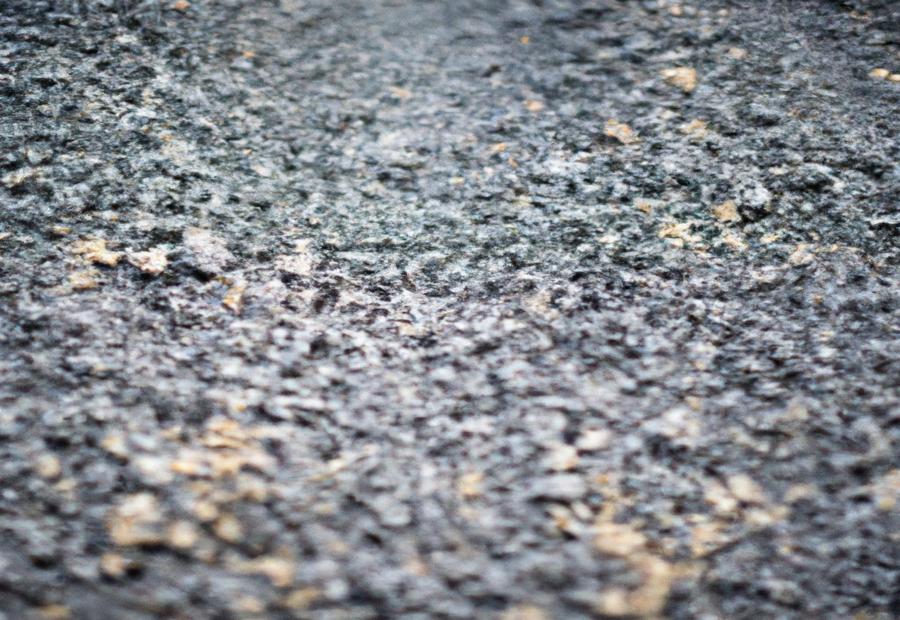


Photo Credits: Build-Wire.Com by Willie Roberts
The unwanted debris in crushed concrete and concrete aggregate can lead to erosion and environmental problems, but understanding the introduction to this topic is crucial. Let’s explore the significance of crushed concrete and concrete aggregate, and how they play a role in construction and sustainability.
Erosion and Environmental Problems Caused by Unwanted Debris
Erosion and environmental issues due to unwanted debris can have a great impact. Uncontrolled debris can cause soil displacement and damage natural habitats. This can lead to loss of biodiversity and harm the ecosystem. Moreover, debris like construction waste can emit hazardous substances.
Crushed concrete and concrete aggregate offer solutions to this problem. Crushed concrete is recycled concrete crushed into smaller pieces. It can be used in backfill, retaining walls, and landscaping. It decreases reliance on natural resources and waste generation.
Crushed concrete also promotes better drainage. Its porous nature allows water to pass through it, reducing the risk of runoff and erosion. This is especially useful in flood-prone regions.
The different sizes of crushed concrete can be used in construction materials for better performance and longevity. Utilizing crushed concrete instead of natural aggregates saves natural resources and reduces the carbon footprint.
Nevertheless, there are limitations. One should get professional help to ensure proper installation, compaction, and maintenance. Exploring new road construction with crushed concrete can provide more sustainable solutions.
Introduction to Crushed Concrete and Concrete Aggregate
Crushed concrete and concrete aggregate are essential for tackling erosion and environmental issues caused by unnecessary debris. Crushed concrete is recycled concrete cut into sizes, and concrete aggregate is made from crushed concrete. These materials have many applications in construction projects, landscaping, dealing with landfill overflow, and more. Using these materials not only helps with old building restoration and improved drainage projects, but also has environmental benefits, such as reducing the need for fresh aggregates.
Crushed concrete used in retaining walls and backfill can stop erosion and reduce damaging runoff. This is especially important in places that flood or where water management is vital. Also, crushed concrete offers advantages due to its various sizes for various construction needs. Different sizes give better compaction and stability when used in construction.
The advantages of using crushed concrete can be seen in its applications in building projects and landscaping. In construction, crushed concrete is useful for road base or subbase materials, meaning less reliance on typical natural aggregates. In landscaping, it can be used as a cost-effective decorative alternative or as a base for walkways.
Crushed concrete also helps address landfill overflow, by reusing this material instead of adding it to landfills. This lets us manage waste more efficiently, while conserving natural resources.
To get an experienced professional’s opinion, a seasoned landscaper talks about the typical applications of crushed concrete and its versatility in the industry.
But beware, working with crushed concrete might leave you feeling somewhat crushed.
What is Crushed Concrete & Concrete Aggregate?
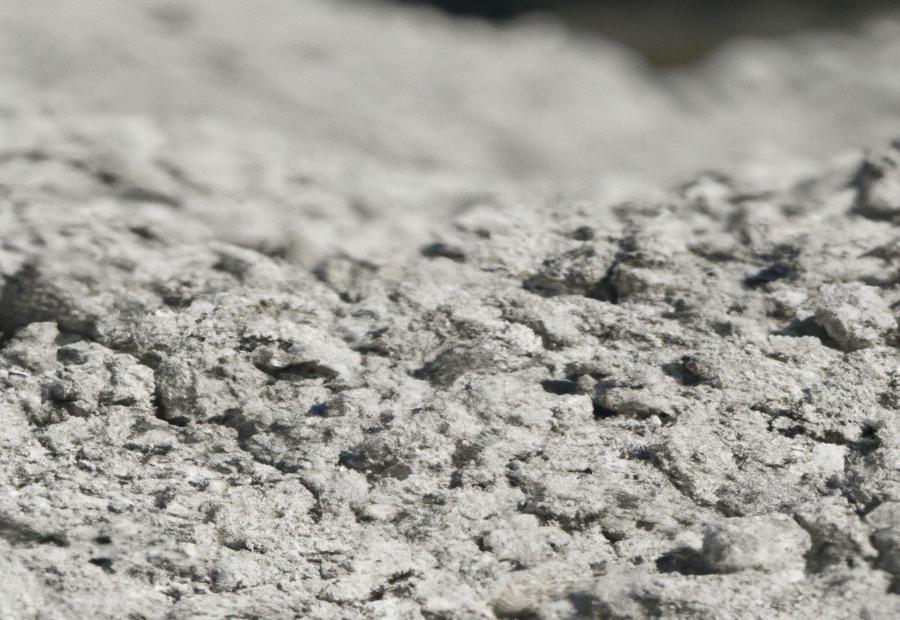


Photo Credits: Build-Wire.Com by Alan Roberts
Crushed concrete and concrete aggregate play a crucial role in construction projects. In this section, we will explore the definition and composition of crushed concrete and concrete aggregate, as well as their versatile applications. Furthermore, we will delve into the use of crushed concrete in retaining walls, its effectiveness as a backfill material, and its impact on mitigating damaging runoff. Stay tuned to discover the valuable insights and benefits of utilizing crushed concrete and concrete aggregate in various construction endeavors.
Definition and Composition of Crushed Concrete and Concrete Aggregate
Crushed concrete and concrete aggregate are materials used in construction projects. Breaking down old concrete into smaller pieces creates crushed concrete. This process uses crushers and screens.
The mix of crushed concrete and concrete aggregate is cement, sand, gravel, and water. They make a solid, durable substance used in construction.
Retaining walls need crushed concrete as backfill material. This provides stability and stops erosion. Crushed concrete also improves drainage in construction projects.
Choosing the right size of crushed concrete gives strength and durability. It also reduces the need for quarried materials and puts less waste in landfills.
Still, using crushed concrete has potential issues with underground utilities. Evaluate the performance of recycled concrete aggregate to make sure it works for your project.
For successful installation and compaction of crushed concrete, get professional help. Consider challenges like fine powder or small pieces.
Retaining walls made of crushed concrete: strength and recycling combined! Plus, it gets rid of unwanted debris.
Use of Crushed Concrete in Retaining Walls
Crushed Concrete is a cost-effective and versatile solution for retaining walls. Its special properties make it a great backfill material, beating erosion and other environmental problems. It offers stability and strength to wall construction, managing runoff.
Backfill material? Check. Crushed Concrete provides an excellent drainage capability and reinforces the structural integrity of the wall. Plus, it reduces the need for other natural aggregates, promoting sustainability. Also, its specific sizes can be adapted to different design requirements.
Retaining walls with Crushed Concrete are long-lasting and need minimal maintenance. That’s why it’s a top choice for contractors. It’s also used in old building restoration projects where traditional stone or brick materials may not be viable. Incorporating it into raised garden beds in a wall structure improves drainage, helping soil and plant health.
The cost-effectiveness and environmental benefits of Crushed Concrete make it popular for retaining wall projects. Contractors have used it as a reliable alternative to natural aggregates. The performance and durability of Crushed Concrete have been proven, minimizing erosion issues caused by runoff. Its value and practicality for these applications are undeniable.
In conclusion, Crushed Concrete is a great material for retaining walls. It offers stability, strength, and effective runoff management. Its use in various applications, versatility in design, and eco-friendly nature make it a top choice. Burying your problems one load at a time can lead to stable retaining walls!
Backfill Material Applications
Backfill material applications are all about using crushed concrete and concrete aggregate for filling in different construction and landscaping projects. It’s used to fill up holes, trenches, and cavities to give support and stability to nearby structures.
Crushed concrete can be used for a variety of backfilling purposes:
- Retaining walls: Crushed concrete makes a great backfill material for retaining walls, providing a steady base and stopping soil from eroding.
- Construction Projects: Cost-effectively backfill underground utilities such as water pipes, drainage systems, and sewer lines with crushed concrete for added stability.
- Landscaping Applications: Fill in excavated areas, create pathways, or level terrain with crushed concrete for a neat and attractive outdoor space.
Crushed concrete is an ideal backfill material solution. Not only does it improve structural integrity, but it also promotes recycling and reduces waste, making it an environmentally friendly choice.
Impact on Damaging Runoff
Crushed concrete and aggregate bring about a huge difference in decreasing harmful runoff. When used as a backfill, it absorbs extra water, keeping erosion or flooding away from the surrounding areas. The composition of crushed concrete encourages better drainage, preventing the build-up of runoff that can cause harm to landscapes and structures.
Using crushed concrete in construction projects helps manage stormwater runoff. It gives a steady base for pavement and stops surface water from collecting. In short, the use of crushed concrete lessens damaging runoff, safeguarding the environment.
Aside from curbing erosion and flooding caused by too much runoff, utilizing crushed concrete in construction projects has other perks. It’s an economical solution for renovating old buildings, substituting recycled materials for what would normally end up in landfills. Additionally, certain sizes of crushed concrete enhance balance and strength in concrete mixes for various uses. Plus, using crushed concrete instead of natural aggregates lessens the need for finite resources and boosts sustainability through material recycling.
The effect on decreasing damaging runoff is just one of the ways that crushed concrete and concrete aggregate can help different projects. By thinking of environmental factors such as improved drainage and lowered risk of erosion, professionals can make sure their constructions meet both short-term structural requirements and long-term sustainability objectives. Whether used as backfill or blended into construction materials, crushed concrete is a functional answer for moderating damaging runoff while providing plenty of benefits in different applications.
Benefits of Using Crushed Concrete & Concrete Aggregate
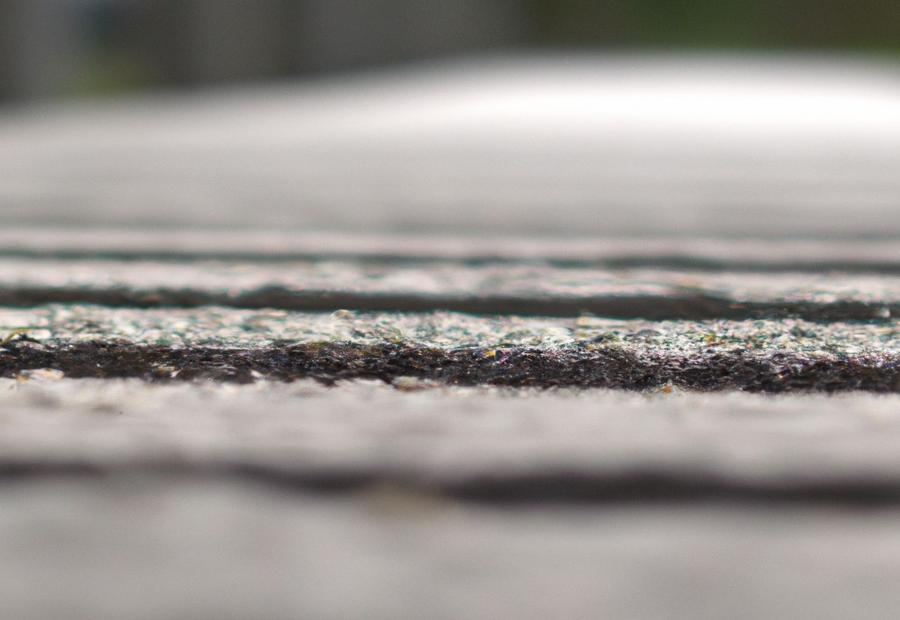


Photo Credits: Build-Wire.Com by Andrew Hall
Utilizing crushed concrete and concrete aggregate comes with a range of benefits. From restoring old buildings to improving drainage projects, the applications are vast. Additionally, specific sizes in concrete aggregate offer advantages, while using crushed concrete has environmental benefits. With its versatility and positive impact, it’s clear why these materials are gaining popularity in various construction projects.
Utilizing Crushed Concrete for Old Building Restoration
Crushed concrete can be a great solution for restoring old buildings. It’s composed of crushed pieces of concrete aggregate and offers many benefits.
Utilizing Crushed Concrete:
- It’s a sustainable and cost-effective alternative to traditional materials.
- It can be used as a base or sub-base material in foundations, for filling voids, leveling surfaces, and reinforcing structures.
- It reduces the need for new excavation, minimizing the environmental impact.
- And it reduces the need for natural aggregates.
In addition, it:
- Contributes to waste reduction by recycling materials that would otherwise end up in landfills.
- Can be combined with other materials to create a customized blend that meets specific project requirements.
- Has been researched for structural integrity and durability in various applications.
Crushed concrete: making water behave better than my ex on a rainy day.
Improved Drainage Projects with Crushed Concrete
Crushed concrete is a great material for construction projects. It lets water pass through, improving drainage. With better permeability than other aggregates, it reduces runoff and increases absorption. This makes it a great choice for drainage solutions.
Using crushed concrete has many advantages too. It helps prevent erosion by creating a stable base. Its composition also promotes better filtration and reduces the risk of clogging. Furthermore, it can be used in trenches and swales to control stormwater runoff and minimize damage.
It has other unique properties which make it useful too. For instance, it is a great backfill material due to its high compaction and load-bearing capacity. Additionally, you can choose specific sizes for precise control over the drainage properties.
Before using crushed concrete, it’s important to consider the limitations. You should evaluate underground utilities to avoid risks during excavation. Plus, assess the performance of recycled concrete aggregate for long-term durability.
When using crushed concrete for drainage projects, it’s best to seek professional help. Experienced contractors know the proper installation techniques and compaction methods for crushed concrete applications. With their help, you can achieve maximum efficiency and longevity in your project.
Size is an important factor with concrete aggregate. Whether small, medium or large, you need to find the right fit for your construction needs.
Advantages of Specific Sizes in Concrete Aggregate
Concrete aggregate comes in different sizes, with various advantages for construction projects. The size of the aggregate affects the strength and performance of the concrete. Builders can choose specific sizes for desired characteristics.
Let’s take a look at what crushed concrete and concrete aggregate comprise of. Crushed concrete is made from recycled stuff like demolition debris or old buildings. It’s then processed into coarse or fine aggregate for concrete mixtures. Concrete aggregate is the combination of crushed stone, sand and gravel with cement to make concrete.
Different dimensions of the aggregate particles offer unique benefits for construction. Smaller-sized aggregates improve workability and bond with cement paste. Larger-sized aggregates increase mechanical strength.
Certain applications need specific sizes of concrete aggregate. Smaller-sized aggregates are often preferred for high-strength and high-performance concretes. Larger-sized aggregates may be used for structural elements that require load-bearing capacity.
This also allows better control over the water-cement ratio, influencing the workability and strength of freshly mixed concrete. Builders can optimize these properties with careful selection of aggregate sizes.
Specific sizes in concrete aggregate also have environmental benefits. Using crushed concrete instead of natural aggregates reduces extraction of virgin materials from quarries or river banks, reducing environmental damage.
Understanding the advantages of specific sizes in concrete aggregate is important for builders and construction professionals. By choosing the right size, they can achieve optimal concrete performance, durability and reduce environmental impact.
Environmental Benefits of Using Crushed Concrete
Crushed concrete has many environmental advantages, making it a great pick for construction. Utilizing it lessens the need for natural aggregates and reduces mining activities. This preserves valuable resources and decreases the environmental effects of quarrying. It also helps to reduce landfill overflow, as an alternate way to dispose of concrete waste.
Moreover, it has better drainage than other materials like gravel or sand. Its permeability allows water to pass through more quickly, lessening surface runoff and preventing erosion. This is very useful in areas with floods or heavy rainfall, as crushed concrete can help reduce stormwater runoff and prevent potential harm from excessive water flow.
In addition, crushed concrete comes in various sizes, which makes it more versatile. Different sizes can be used for different applications, like road construction or landscaping projects. This provides precise and efficient usage, decreasing waste and ensuring optimal performance in different scenarios.
Using crushed concrete spares the need for extra production processes for natural aggregates. This lessens dependence on extracting new materials and cuts down on energy usage associated with production, contributing to a more sustainable construction industry.
For instance, a construction project demolished many existing structures to make way for new projects. Instead of getting rid of all the rubble in landfills, the contractors crushed the materials and reused them as aggregate in constructing new roads and foundations. This creative choice not only saved money on transport, but also saved natural resources and decreased the environmental impacts of the project.
Common Applications of Crushed Concrete & Concrete Aggregate



Photo Credits: Build-Wire.Com by Christian White
When it comes to crushed concrete and concrete aggregate, there are numerous common applications that can make use of these materials. From construction projects to landscaping applications and even addressing landfill overflow, the versatility of crushed concrete and concrete aggregate knows no bounds. In this section, we will explore these different applications and gain insights from a seasoned landscaper on the expert perspectives surrounding their use. Get ready to discover the wide range of possibilities that crushed concrete and concrete aggregate can offer.
Crushed Concrete Aggregate in Construction Projects
Crushed concrete aggregate is a useful material for construction projects. It consists of crushed pieces of concrete, from old buildings or other sources. This aggregate offers many advantages–like better drainage and environmental benefits.
When utilized in construction projects, crushed concrete aggregate provides a strong and secure base. It is suitable for roadways, sidewalks, and foundations. The composition of the aggregate allows it to replace natural resources while providing strength and stability.
An amazing detail about crushed concrete aggregate is its capacity to tackle landfill overflow. By reusing old concrete debris instead of sending it to landfills, it reduces waste and minimizes harm to the environment. This not only saves space in landfills but also cuts down on the demand for new materials, forming a more sustainable approach to construction.
An example of this was when a building project had issues with landfill overflow due to demolished concrete debris. By using crushed concrete aggregate in place of ordinary fill materials, the problem was successfully tackled. The use of crushed concrete offered an environmentally conscious solution and was financially viable and efficient in dealing with the project’s trash disposal needs.
In conclusion, using crushed concrete aggregate in construction projects has many benefits. It is versatile and can be applied in many applications, giving durability and stability to structures. And, its power to address environmental worries like landfill overflow makes it an alluring choice for sustainable construction practices.
Landscaping Applications with Crushed Concrete
Crushed concrete is a great material for landscaping! It can be used as a base for pathways and driveways, fill material in planters and flower pots, and even as decorative ground cover.
The material has practical benefits too. It offers a stable foundation, prevents erosion, and allows for proper drainage. Its porous nature also encourages water retention, which helps to promote healthy plant growth.
Using crushed concrete is also beneficial to the environment. By repurposing old concrete, it reduces the demand for virgin resources, which lowers carbon emissions from traditional manufacturing processes.
So, if you’re looking for a material that looks great, functions well, and promotes sustainability, crushed concrete is the perfect choice!
Addressing Landfill Overflow with Crushed Concrete
Crushed concrete is a cost-effective alternative for traditional fill materials in landfills. Its tight compaction reduces the space needed for waste storage. It also stabilizes and limits runoff, offering environmental benefits by diverting waste from landfills and reducing the need for mining.
Using crushed concrete in landfill applications promotes sustainability by recycling and reusing waste materials. It helps to manage waste disposal while minimizing its impact on the environment.
However, there are challenges and limitations to consider when using crushed concrete. It must meet specific requirements for compaction and stability, and proper installation techniques should be followed. Professional help is key to overcoming these issues.
In the future, crushed concrete has the potential to be used in new road construction projects. Its durability and strength make it a great option for road base material. By using recycled crushed concrete in infrastructure development, we can reduce reliance on traditional aggregates and promote sustainability.
Expert Perspectives: Insights from a Seasoned Landscaper
A seasoned landscaper’s insights can provide valuable perspectives on crushed concrete and concrete aggregate. Their expertise can show the benefits, limitations, and best practices for using these materials. Also, a landscaper’s perspective can highlight the aesthetic possibilities that crushed concrete brings to outdoor spaces. Understanding a landscaper’s experiences and perspectives can help people make informed decisions.
The insights go beyond technical aspects. They include practical considerations, like selecting the right sizes and types of crushed concrete. Plus, the environmental impacts associated with their use. A seasoned landscaper can address any challenges or limitations that arise while working with crushed concrete. They know how to install and compact the material, and maintain proper drainage. Heeding their insights can prevent issues, like fine powder or small pieces, during installation.
Using Crushed Concrete as Aggregate in Construction Materials
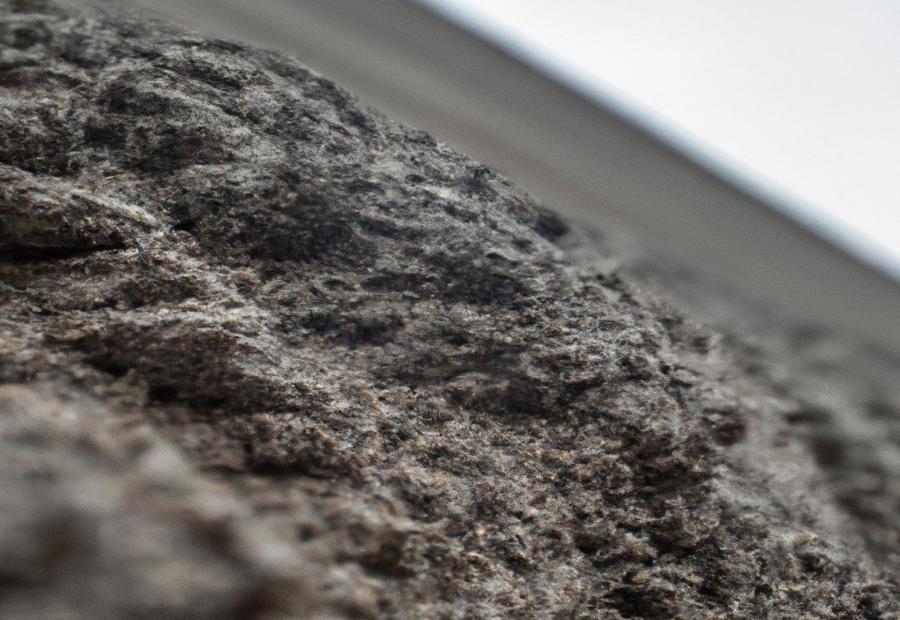


Photo Credits: Build-Wire.Com by Mason Nelson
Discover the endless possibilities of using crushed concrete as aggregate in construction materials. From construction applications to raised garden beds, we will explore how this versatile material can revolutionize traditional practices. Join us as we compare natural aggregates with recycled concrete and delve into the various processing methods for creating sustainable construction solutions. Get ready for a transformative journey into the world of crushed concrete aggregate in construction.
Construction Applications of Crushed Concrete Aggregate
Crushed concrete aggregate has many construction uses. It can be an alternative to natural aggregates, saving costs and aiding sustainability. It works for roads, sidewalks, driveways, and foundations.
Roads benefit from crushed concrete aggregate’s cost-effectiveness and strength. Plus, using it decreases the need for landfill waste.
Sidewalks and driveways also use this material, as it is very durable and can handle heavy traffic. Additionally, it helps reduce demand for natural aggregates.
Crushed concrete aggregate is great for building foundations too. It offers high load-bearing capacity and stability, perfect for supporting heavy loads. With recycled materials like this, construction projects are more eco-friendly.
Raised garden beds are even better with crushed concrete. It gives your plants the best foundation, and looks great too!
Utilizing Crushed Concrete in Raised Garden Beds
Crushed concrete is a great material for construction projects, like raised garden beds. It has many benefits!
- Firstly, it has great drainage capabilities. This helps water to drain away from the plants’ roots and stops waterlogging.
- Secondly, using crushed concrete makes the garden bed structure more durable and long-lasting. It can hold soil and plants without sinking or becoming unstable.
So, if you want a reliable gardening solution, crushed concrete in raised garden beds is perfect!
Comparing Natural Aggregates with Recycled Concrete
Recycled concrete is often compared to natural aggregates for their characteristics and suitability for uses. Composition and properties are considered to decide their performance and effectiveness. Plus, the environmental benefits of using recycled concrete instead of natural aggregates are examined.
A study can be done of natural aggregates and recycled concrete for composition, physical properties, and applications. Check out the table below for an overview:
| Aspect | Natural Aggregates | Recycled Concrete |
|---|---|---|
| Composition | Rock or mineral formation | Crushed and processed concrete debris |
| Physical Properties | Vary depending on source | Uniformly graded with potential for high water absorption |
| Applications | Construction projects, landscaping | Retaining walls, backfill material, landfill overflow |
Apart from the already mentioned aspects, recycled concrete has advantages beyond its composition and physical properties. Its use contributes to environmental sustainability by reducing the construction waste in landfills. In addition, using recycled concrete in many applications encourages efficient resource management. This shows the importance of taking into account both practical and environmental factors when contrasting natural aggregates with recycled concrete.
Processing Methods for Recycled Concrete
Recycled concrete can be reused effectively with the right processing steps. First, a crushing machine crushes it into smaller pieces. After, a separation process removes any contaminants like metal or wood. Then, it’s screened and sorted to create different sizes of recycled concrete aggregate.
These methods convert old concrete into something useful for new construction projects. They also reduce the amount of waste going to landfills, helping the environment.
Plus, processing recycled concrete reduces the carbon footprint of making new concrete. So, it’s a win-win! Unlike your ex, recycled concrete won’t ghost you — it’s always there when you need it.
Considerations and Limitations of Crushed Concrete
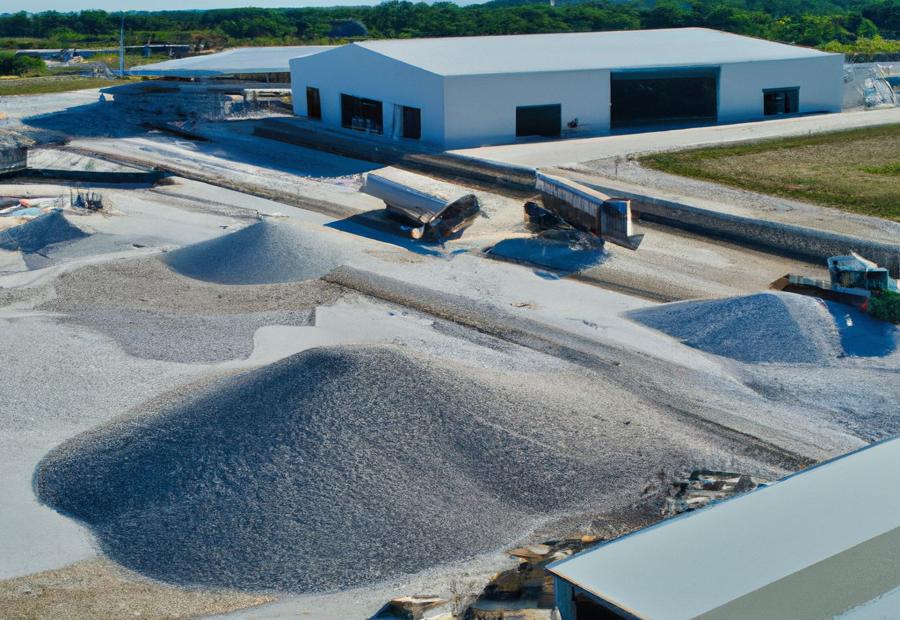


Photo Credits: Build-Wire.Com by Bradley Robinson
Considering the limitations and factors to consider, let’s explore potential concerns surrounding the use of crushed concrete, such as its impact on underground utilities. Additionally, we will delve into evaluating the performance of recycled concrete aggregate to gain a comprehensive understanding of its benefits and drawbacks.
Potential Issues with Underground Utilities and Crushed Concrete
Underground utilities and crushed concrete may cause problems.
- Using crushed concrete as backfill can add load to the utilities, possibly damaging or disrupting them. The weight and density of crushed concrete can pressure pipes, cables, or other infrastructure, resulting in costly repairs and service stoppages.
- Nearby crushed concrete makes repairs and upgrade operations more difficult. Heavy machinery or excavation gear used to access the utilities might worsen the crushed concrete. This creates extra issues for utility companies and contractors during repair or upgrade.
- Thirdly, subsidence is a potential issue when using crushed concrete near underground utilities. Subsidence is the shifting or settling of the ground surface due to soil compaction, erosion, or moisture changes. If precautions are not taken installing and compacting the crushed concrete near the utilities, it could cause uneven settling, stressing pipelines or cables.
Considering these potential issues is essential to prevent any impacts on utility infrastructure and maintain safety and functionality of the utilities and environment.
Professionals involving construction projects with crushed concrete should think about these issues through planning, proper installation, maintenance, and communication with utility providers. This way, they can reduce risks associated with underground utilities and reap the benefits of crushed concrete as a construction material.
Evaluating the Performance of Recycled Concrete Aggregate
Recycled concrete aggregate is a valuable material used in many construction projects. Its performance is very important. So, assessing its physical properties, durability, and effectiveness is essential.
To determine the performance of recycled concrete aggregate, we must consider its composition, particle size distribution, and strength characteristics. Depending on the source material and processing methods, the composition of recycled concrete aggregate can vary.
Using recycled concrete aggregate has several advantages, like reducing the need for natural resources and cutting down on waste generation. But, to make sure it meets the standards and substitutes regular aggregates, its performance must be evaluated.
So, laboratory testing is carried out to examine various properties, such as compressive strength, water absorption, and abrasion resistance. This testing helps us understand how recycled concrete aggregate performs under different conditions.
Field evaluations are also done to check how it performs in real-world projects. We look at cracking, settlement, and long-term durability. By studying these factors over time, we can figure out if recycled concrete aggregate is suitable for certain projects.
In conclusion, assessing the performance of recycled concrete aggregate is really important to guarantee its reliability in construction applications. By looking at composition, physical properties, and durability, engineers can make the right decisions about using it for various projects. By researching and evaluating it, we can fully explore its potential for sustainable road construction. Compacting crushed concrete is like giving it a strong hug – making sure it’s solid and unbreakable, even by Mother Nature.
Proper Installation and Compaction of Crushed Concrete
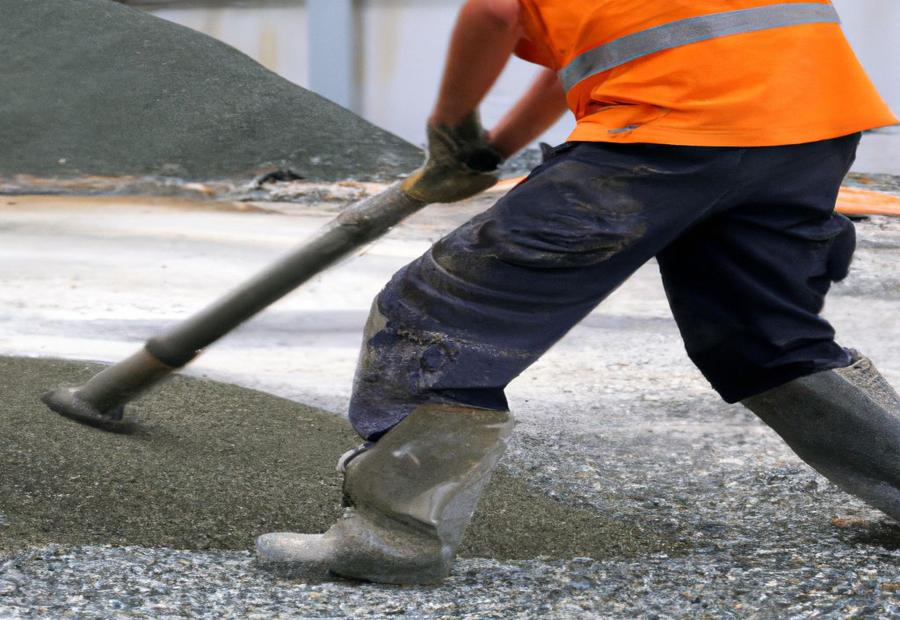


Photo Credits: Build-Wire.Com by Jeremy Taylor
Properly installing and compacting crushed concrete is integral to ensure a successful construction project. In this section, we will explore the installation process of crushed concrete, different compaction techniques used, and how to address challenges posed by fine powder and small pieces. By understanding these aspects, you will be equipped with the knowledge to maximize the benefits of using crushed concrete in your projects.
Understanding the Installation Process of Crushed Concrete
Crush it, compact it, conquer it! Master the art of compaction with crushed concrete. Clear debris and grade the area for installation. Place geotextile fabric and spread an even layer of crushed concrete. Thoroughly compact the material with vibrating plate compactors or rollers, adding water when needed for binding. Check for any low spots and fill with extra crushed concrete. See the success of your project with a durable and long-lasting surface.
Compaction Techniques for Crushed Concrete
- Firstly, get the area ready. Clear away any debris and make it level.
- Secondly, spread the crushed concrete in layers. Build them up gradually and compact each layer.
- Thirdly, use a compactor. From handheld plates to bigger machines. This helps to remove air voids and increase the density.
Compacting crushed concrete is essential. It provides a solid base for construction projects. But there’s a challenge with fine powder and small pieces.
Addressing Challenges with Fine Powder and Small Pieces
Crushed concrete with fine powder and small particles presents challenges. These small pieces can hinder proper compaction, reducing stability. Particles can also cause dust which can be harmful to humans. Furthermore, the small pieces don’t offer as much structural support.
To handle these issues, several steps can be taken:
- Properly screen and sort the crushed concrete. This will help improve compaction and stability by providing bigger pieces.
- Use additives such as cement or lime to bind together the fine powder and small pieces, adding strength and stability.
- Water or add dust suppressants to control dust generation. Minimizing health risks from airborne particles.
- Consult a professional for guidance. Their knowledge and experience will help ensure a successful outcome.
By taking proactive measures, the problems posed by fine powder and small pieces can be addressed. This ensures durable and reliable use of crushed concrete.
Precautions and Maintenance of Crushed Concrete
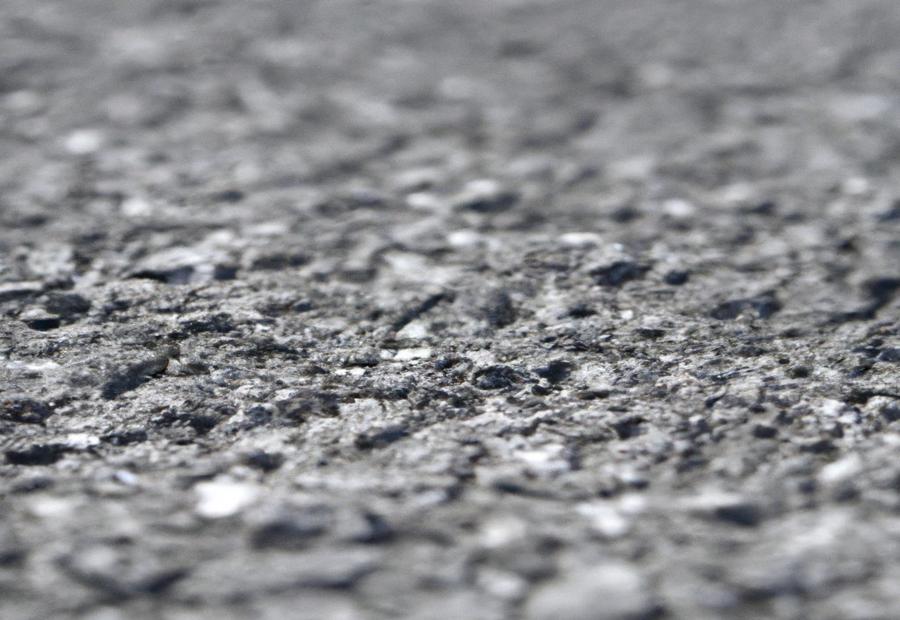


Photo Credits: Build-Wire.Com by Bradley Clark
When it comes to crushed concrete, taking precautions and maintaining it properly is crucial. In this section, we’ll explore different aspects of handling crushed concrete, including using it as structural fill material, addressing asphalt debris, and ensuring proper drainage. By understanding these practical considerations, you’ll be better equipped to maximize the benefits of utilizing crushed concrete in your projects while ensuring its long-term durability and functionality.
Using Crushed Concrete as Structural Fill Material
Utilizing Crushed Concrete as Structural Fill Material
Structural fill material is essential for many construction projects. An alternate option is crushed concrete. It offers a sustainable and economical solution for filling and making a solid foundation. Repurposing waste concrete reduces demand for natural resources and lowers environmental concerns with disposing of concrete debris.
- Stability: Compacted crushed concrete provides great stability and can hold heavy loads. It serves as a strong base for roads, parking lots, building foundations, and retaining walls.
- Erosion Control: Utilizing crushed concrete as structural fill material prevents soil erosion. Its interlocking creates a strong barrier and stops water from washing away the soil.
- Sustainability: By using crushed concrete as structural fill material, construction projects are more sustainable. This recycled aggregate replaces traditional materials and lowers the carbon footprint.
- Cost-Effective: In addition to its environmental perks, using crushed concrete as structural fill is cost-effective. Recycling waste concrete cuts disposal costs and eliminates the need to purchase new aggregates.
Moreover, crushed concrete used as structural fill material brings other advantages like improved drainage and reduced risk of settling due to its compaction properties. Its versatility allows it to be used in construction projects which need stability and sustainability.
Finding bits of asphalt in crushed concrete is like discovering a raisin in oatmeal – not what you wanted!
Dealing with Asphalt Debris in Crushed Concrete
Asphalt debris in crushed concrete is a common issue when using recycled aggregate. It’s important to address it to keep the quality of the crushed concrete.
Sorting and separating during the recycling process can help. Evaluating and screening the crushed concrete removes larger asphalt pieces. This ensures a more uniform quality.
Additives and binders can also be used. They are added during mixing or production to improve the strength of the crushed concrete. This reduces issues caused by asphalt debris.
Maintenance and inspections are needed to identify any areas with asphalt debris. Taking measures early on repairs or replaces affected sections, ensuring long-term performance.
Dealing with asphalt debris in crushed concrete requires attention and maintenance. By doing this, it’s possible to maximize the benefits of crushed concrete and minimize potential problems.
Maintaining Proper Drainage with Crushed Concrete
Crushed concrete is crucial for proper water management. It is made up of recycled material and has great drainage capabilities. Installing it correctly allows water to pass through, preventing erosion and flooding.
Crushed concrete is a reliable backfill option. It fills spaces and voids, ensuring drainage pathways. This decreases hydrostatic pressure on structures and increases their longevity.
Furthermore, crushed concrete controls runoff better than traditional materials. It promotes water infiltration and replenishes groundwater levels.
Using crushed concrete has many benefits. Natural resources are conserved and there is less need for quarrying activities. Waste from demolished structures is also reduced by recycling old materials.
Conclusion
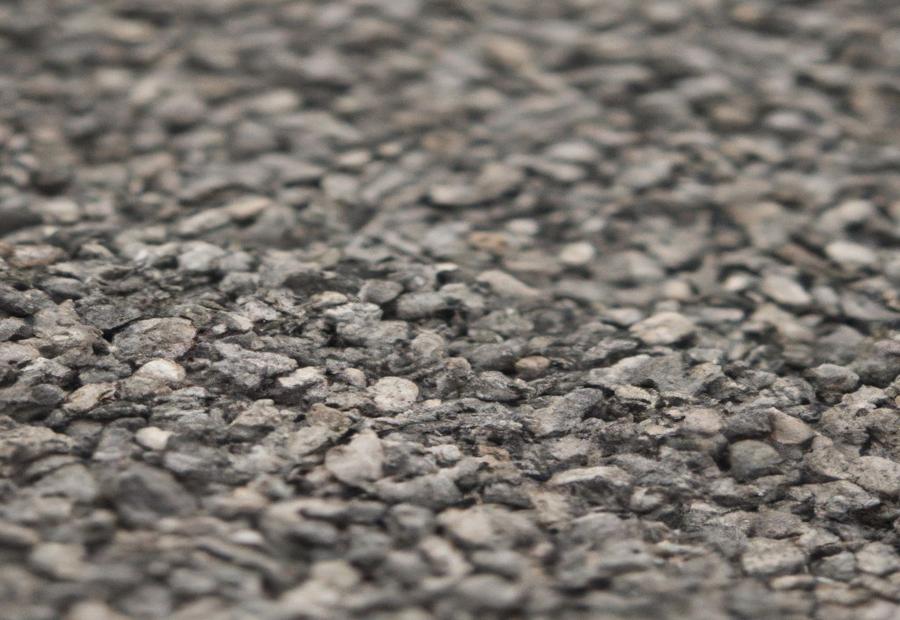


Photo Credits: Build-Wire.Com by Keith Green
As we conclude our exploration of crushed concrete and concrete aggregate, let’s recap the common applications and benefits, address the challenges and limitations, highlight the importance of professional assistance, and delve into the potential of crushed concrete in new road construction. Additionally, we’ll emphasize the sustainable nature of crushed concrete as a naturally occurring material. This comprehensive conclusion offers insights into the practical uses, considerations, and potential advancements in the world of crushed concrete.
Recap of Common Applications and Benefits of Crushed Concrete
Crushed concrete offers a plethora of uses and advantages in construction projects. An alternative to natural aggregates, it provides a sustainable solution for varied needs. This paragraph will summarize the applications and benefits of crushed concrete without directly mentioning its heading.
- In roadway, sidewalk and foundation construction, crushed concrete acts as aggregate, offering strength and durability.
- For landscaping projects, crushed concrete serves as pathway, driveway and retaining wall material, providing stability and attractive aesthetics.
- To decrease landfill overflow, crushed concrete can be used as fill material, lessening the need for disposal.
- Skilled landscapers recognize the advantages of employing crushed concrete in multiple projects due to its versatility and sustainability.
Moreover, crushed concrete is beneficial in old building restoration by functioning as a construction material. It is superior in drainage capabilities to standard materials. Additionally, crushed concrete’s recycled nature reduces wastage and lowers the carbon footprint. However, assessing the performance of recycled concrete is important to guarantee its appropriateness for specific applications.
In general, understanding the correct installation and compaction techniques is vital for taking full advantage of crushed concrete while dealing with potential issues such as powder and small pieces. Maintenance requires suitable drainage maintenance to avoid difficulties with structural fill material made from crushed concrete. With professional help during distinct stages of a project involving crushed concrete, the potential of this sustainable material can be totally exploited for fresh road construction or other purposes needing sturdy and eco-friendly solutions.
This article has addressed the ordinary applications and advantages of using crushed concrete in various construction projects. The value of professional guidance is underscored throughout to assure successful implementation while contemplating unique constraints and considerations. Moreover, crushed concrete’s sustainable character as a naturally occurring material contributes to its popularity as an alternative to traditional aggregates.
Crushed concrete: taking on challenges to create successful outcomes!
Addressing Challenges and Limitations
Crushed concrete is a useful construction material. It has many advantages, yet certain issues and restrictions must be taken into account.
Underground utilities such as pipes and cables must be considered when using crushed concrete. To protect them, proper planning and caution must be used in the installation process. This includes finding and securing the utilities.
The performance of recycled concrete aggregate must be evaluated across different applications. Testing and monitoring must be done, to assess any potential limitations or weaknesses that could affect its performance.
The installation of crushed concrete needs careful consideration of factors like compaction techniques and drainage. Poor installation can cause problems, like uneven settling or instability, which can weaken the structure.
When crushed concrete is mixed with asphalt, the asphalt must be separated. It should then be reused or recycled correctly.
Drainage can be a problem with crushed concrete, particularly if fine powder or small pieces are present. Suitable compaction techniques and enough slope for water runoff must be used during installation.
Despite the issues, crushed concrete is valuable when used properly. It is eco-friendly and cost-effective.
Addressing the challenges and limitations of crushed concrete is important. It is not only necessary to consider underground utilities, but also to evaluate the performance of recycled concrete aggregate. Testing and monitoring will identify any weaknesses early, so crushed concrete can be used optimally.
A great example of addressing issues related to underground utilities is a construction project. The team encountered the challenge of using crushed concrete near underground utilities. To avoid damage, they conducted a thorough investigation to locate and secure the utilities during the installation process. This proactive approach saved them time, money, and trouble, showing how important it is to address issues related to underground utilities when working with crushed concrete.
Importance of Professional Assistance in Crushed Concrete Projects
Professionals are key when it comes to crushed concrete projects. They have a grasp on erosion and environmental problems from debris. Plus, they know the composition and use of crushed concrete and its various aggregates for things like retaining walls, backfill, and minimizing runoff.
They can also tell you the benefits of crushed concrete, like for restoring old buildings, drainage, and environmental advantages. They know the common applications for it, too. And, they can provide advice on how to use it for landfill overflow.
In addition to their expertise, professionals understand any potential issues that come with using crushed concrete, like those with underground utilities. And, they can evaluate the performance of recycled concrete.
Plus, professionals can help with installation and compaction techniques. They know the intricacies of this process and can guide you through challenges with fine powder and small pieces. It’s clear that professional assistance is essential for crushed concrete projects.
Exploring the Potential of Crushed Concrete in New Road Construction
Crushed concrete has huge potential in road building. It provides advantages like: better drainage, reduced environmental effect, and cost-efficiency. Its composition and strength make it ideal for construction applications, like retaining walls and backfill materials. It is an eco-friendly alternative to natural aggregates, and has the potential to tackle landfill overload problems.
Using crushed concrete in raised garden beds also reuses the material effectively. Compared to natural aggregates, it has similar characteristics and reduces the need for new materials. Plus, processing it meets the standards for construction projects. By considering its advantages and limitations, it can be used in projects as a reliable aggregate.
For better understanding of its potential, experts are essential. Compaction techniques made for crushed concrete should be employed to overcome the issues of powder and small pieces. Caution should be taken when using it around underground utilities.
This article highlights that crushed concrete has vast applications in landscaping and waste management. Its sustainability is in line with environment-friendly practices for construction, while providing economic benefits. By exploring its full potential and investing in research on its suitability for road projects, we can create more sustainable infrastructure which takes care of both economic and environmental concerns efficiently.
The Sustainable Nature of Crushed Concrete as a Naturally Occurring Material
Crushed concrete is a sustainable material. It is a cost-effective alternative to traditional construction materials, like gravel or natural aggregates. It reduces the need for virgin resources and landfill space. This makes it an environmentally friendly choice. Production of crushed concrete involves recycling leftover or demolished concrete structures. Thus, reducing waste sent to landfills. The recycled material is crushed into small particles, known as aggregate, and can be used in construction projects.
Crushed concrete improves drainage in construction projects. Its porosity allows for better water infiltration. This prevents risks associated with erosion and waterlogging. It is useful in applications such as retaining walls and raised garden beds.
It also offers durability and stability. Different sizes of aggregate can be chosen for specific strengths and properties. This versatility ensures optimal performance and longevity. By using crushed concrete, we can conserve natural resources like gravel or sand. Repurposing existing materials reduces environmental impact.
In conclusion, crushed concrete’s sustainable nature makes it an ideal choice for construction projects. Its ability to reduce the demand for virgin resources, improve drainage, and provide durability and stability, highlights its value.
Some Facts About Crushed Concrete & Concrete Aggregate:
- ✅ Crushed concrete aggregate is a cost-effective and sustainable material for construction and landscaping. (Source: Team Research)
- ✅ It is made up of recycled concrete from other construction projects, reducing landfill overflow and saving resources. (Source: Team Research)
- ✅ Crushed concrete can be used to create walkways, garden beds, driveways, and even retaining walls. (Source: Team Research)
- ✅ Installation should be done by professionals to ensure the right type and amount of crushed concrete is used. (Source: Team Research)
- ✅ Using crushed concrete as aggregate in construction reduces the demand for natural aggregates, conserves resources, and reduces waste. (Source: Everything About Concrete)
FAQs about Everything You Need To Know About Crushed Concrete & Concrete Aggregate
1. Can crushed concrete help solve drainage issues in my landscaping projects?
Yes, crushed concrete can effectively address drainage issues. When properly installed and compacted, it allows water to flow through, preventing water buildup and potential flooding. It is commonly used as a drainage material in projects such as French drains and trench drains.
2. What should I do if I accidentally order crushed concrete in the wrong size?
If you have ordered crushed concrete in the wrong size, it is important to contact your supplier or contractor as soon as possible. They can assist you in finding a solution, such as exchanging the material for the correct size or providing guidance on how to resize or repurpose the crushed concrete.
3. Can crushed concrete cause landscaping problems due to its rougher texture?
While crushed concrete has a rougher texture compared to natural aggregates, it can still be used in various landscaping projects. However, if you have concerns about the texture affecting the overall aesthetics or functionality of your landscaping, it is recommended to consult with a professional to explore alternative options or techniques for incorporating crushed concrete into your design.
4. Is crushed concrete difficult to install, or can I do it myself?
The installation of crushed concrete might require specific knowledge and equipment, therefore, it is recommended to seek professional assistance for proper installation. They have the expertise to determine the right type and amount of crushed concrete needed for your project and can ensure the material is properly compacted and cured, resulting in a durable and long-lasting installation.
5. Can crushed concrete be used for projects that require a specific aggregate size?
Crushed concrete is available in different sizes and can be used for a variety of construction projects. However, if your project requires a specific aggregate size, it is essential to communicate your requirements to the supplier or contractor to ensure they provide you with the appropriate crushed concrete that meets your specifications.
6. Should I be concerned about potential landscaping problems when using crushed concrete?
While crushed concrete can be used for landscaping purposes, it is important to consider the specific characteristics of your project. The rougher texture and composition of crushed concrete may not be suitable for all landscaping designs. Consulting with a professional can help assess potential landscaping problems and provide recommendations for alternative materials or techniques if needed.